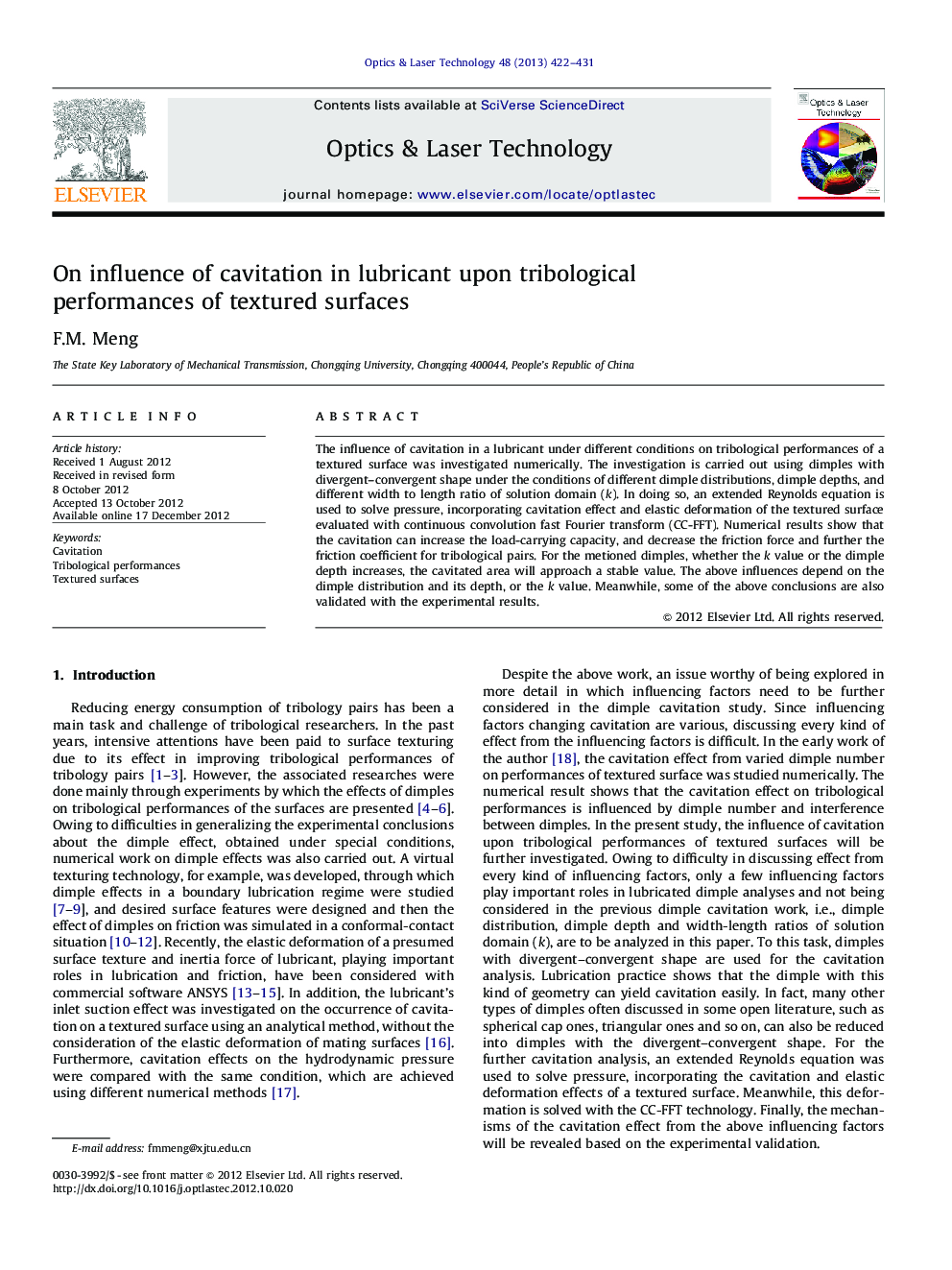| Article ID | Journal | Published Year | Pages | File Type |
|---|---|---|---|---|
| 734496 | Optics & Laser Technology | 2013 | 10 Pages |
The influence of cavitation in a lubricant under different conditions on tribological performances of a textured surface was investigated numerically. The investigation is carried out using dimples with divergent–convergent shape under the conditions of different dimple distributions, dimple depths, and different width to length ratio of solution domain (k). In doing so, an extended Reynolds equation is used to solve pressure, incorporating cavitation effect and elastic deformation of the textured surface evaluated with continuous convolution fast Fourier transform (CC-FFT). Numerical results show that the cavitation can increase the load-carrying capacity, and decrease the friction force and further the friction coefficient for tribological pairs. For the metioned dimples, whether the k value or the dimple depth increases, the cavitated area will approach a stable value. The above influences depend on the dimple distribution and its depth, or the k value. Meanwhile, some of the above conclusions are also validated with the experimental results.
► The cavitation can increase the load-carrying capacity of the lubricant. ► The cavitation can reduce the friction coefficient of the textured surfaces. ► The cavitated area depends on the length–width ratio of the solution domain. ► This cavitation effect is influenced by dimple distribution and its depth.
